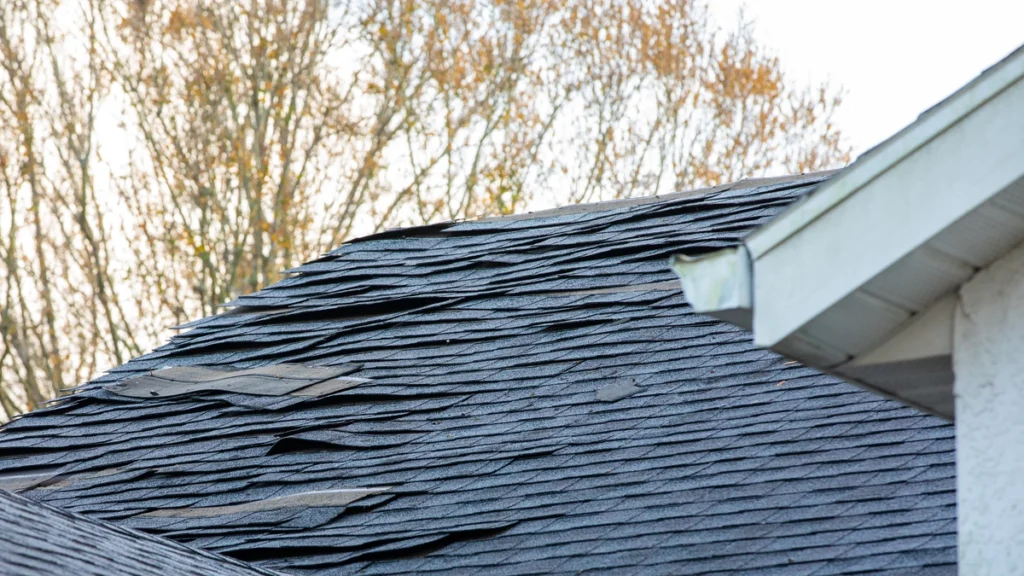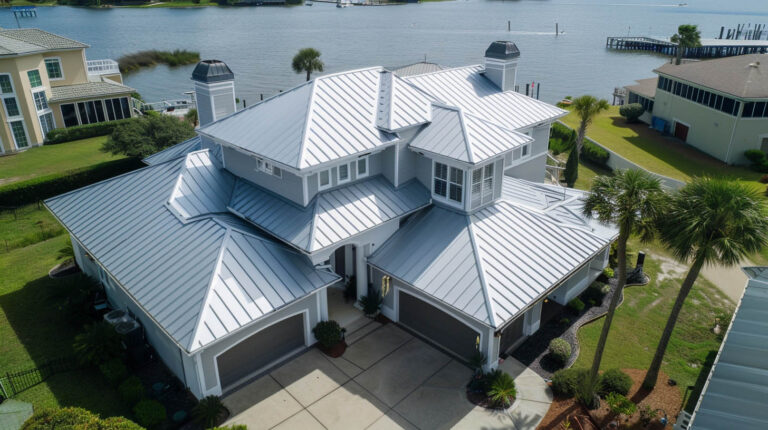
Blog
How Much Value Does a New Roof Add? [2024 Update]
When it comes to home improvement projects, few are as essential and financially rewarding as investing in a new roof. On the other hand, there are few projects that are quite as daunting.
That being said, there are lots of benefits to a roof replacement. A sturdy and aesthetically pleasing roof not only enhances your home’s curb appeal but also adds significant value to your property. Wondering how much value does a new roof add to your home? We’ve got you covered.
In this blog post, we’ll explore the various aspects of roof replacement, including:
- How much value a new roof can bring to your house
- Signs of roof deterioration
- When it is time to replace your roof
Signs It’s Time for a Roof Replacement

Before diving into the value a new roof can provide, it’s crucial to understand when it’s time for a replacement. Ignoring a deteriorating roof can lead to costly damage to your home’s interior and structural components. Here are some signs to watch out for:
- Age: Most roofing materials have a lifespan. Asphalt shingles, for example, typically last 20-25 years. If your roof is approaching or past its expected lifespan, it’s time to consider replacement.
- Leakage: If you notice water stains on your ceilings or walls, it’s a clear indication of roof leaks. Ignoring these leaks can lead to mold growth and extensive damage.
- Missing or Damaged Shingles: Cracked, curling, or missing shingles can compromise your roof’s ability to protect your home.
- Sagging Roof: A sagging roof is a structural concern that requires immediate attention. It can indicate water damage to the roof deck or framing.
- Excessive Granules in Gutters: If you find an excessive amount of granules from your shingles in your gutters, it’s a sign that your shingles are deteriorating.
- Higher Energy Bills: An aging or damaged roof can result in poor insulation and increased energy costs.
- Moss and Algae Growth: While not always a sign of immediate danger, moss and algae can indicate moisture retention on your roof, which can lead to deterioration over time.
5 Different Roofing Materials
When considering a roof replacement, it’s essential to choose the right roofing material for your home. The material you select can impact your home’s aesthetics, durability, and, ultimately, its value. Here are some common roofing materials to consider:
1) Asphalt Shingles
An asphalt shingle roof is the most popular roofing material due to its affordability and ease of installation. They come in various styles and colors to suit your home’s look.
2) Metal Roofing

Metal roofs are durable, energy-efficient, and can last 50 years or more. They are available in various metals like steel, aluminum, and copper.
3) Wood Shakes or Shingles
Wood roofs provide a classic, natural appearance. However, they require more maintenance to provide wood rot and have a shorter lifespan compared to other materials.
4) Slate Roofing
Slate is known for its elegance and longevity. This natural stone roofing material can last over 100 years but is also one of the most expensive roofing materials.
5) Tile Roofing
Clay or concrete tiles offer a unique, Mediterranean-style look. They are durable and long-lasting but can be heavy, requiring additional roof support.
Average Cost of a Roof

The cost of a new roof can vary significantly based on factors such as the material chosen, the size and complexity of your roof, and your location. On average, you can expect to pay anywhere from $5,000 to $20,000 or more for a roof replacement. Here’s a rough breakdown of costs by roofing material:
- Asphalt Shingles: $3 – $5 per square foot.
- Metal Roofing: $7 – $12 per square foot.
- Wood Shakes or Shingles: $7 – $10 per square foot.
- Slate Roofing: $15 – $25 per square foot.
- Tile Roofing: $8 – $15 per square foot.
It’s essential to obtain multiple quotes from reputable roofing contractors to get a more accurate estimate for your specific project.
How Much Value Does A New Roof Add?
Now, let’s explore the return on investment (ROI) you can expect from a new roof. While a roof replacement is a significant upfront cost, it offers numerous benefits that can pay off in the long run:
- Increased Home Value: A new roof enhances your home’s curb appeal, making it more attractive to potential buyers. This can lead to a higher selling price when you decide to sell your home.
- Energy Efficiency: Many modern roofing materials, such as reflective metal or energy-efficient shingles, can improve your home’s energy efficiency. This results in lower energy bills and increased savings over time.
- Peace of Mind: A new roof provides peace of mind, knowing that your home is protected from leaks and structural damage. This can prevent costly repairs down the road.
- Insurance Savings: Some insurance companies offer discounts for homes with newer roofs, as they are less likely to experience damage during storms.
- Extended Lifespan: Investing in a high-quality roofing material can extend the lifespan of your roof, reducing the need for frequent replacements.
- Appreciation Over Time: As property values increase, the value of your home with a new roof will also appreciate.
In general, most homeowners can expect an ROI of around 65% when they replace their existing roof.
A Roofing Contractor You Can Trust
A new roof is not only a practical necessity but also a valuable investment for your home. It not only protects your property and enhances its aesthetics but also provides a solid return on investment over time. But managing a roof replacement? Definitely stressful.
Luckily, you have the team at Avenue Roofing on your side. From inspections to a final installation, you’ll have access to a team that can answer all of your questions. Contact us today to set up your free roof inspection!
FAQ
What increases the value of houses?
Renovations, curb appeal, and energy-efficient upgrades increase house value.
Does an old roof affect appraisal?
Yes, an old roof can lower appraisal value due to potential repair costs.
When should I invest in a new roof?
Invest in a new roof when repairs are frequent, leaks occur, or it nears its lifespan.



